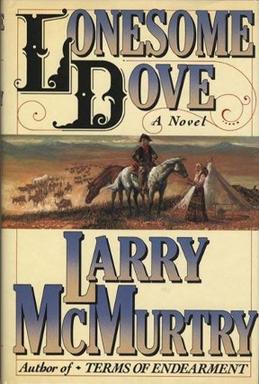
Lonesome Dove is a 1985 Western novel by American writer Larry McMurtry. It is the first published book of the Lonesome Dove series and the third installment in the series chronologically. It was a bestseller and won the 1986 Pulitzer Prize for Fiction. In 1989, it was adapted as a TV miniseries starring Tommy Lee Jones and Robert Duvall, which won both critical and popular acclaim. McMurtry went on to write a sequel, Streets of Laredo (1993), and two prequels, Dead Man's Walk (1995) and Comanche Moon (1997), all of which were also adapted as TV series.

Virginia Mayo was an American actress and dancer. She was in a series of popular comedy films with Danny Kaye and was Warner Bros.' biggest box-office draw in the late 1940s. She also co-starred in the 1946 Oscar-winning movie The Best Years of Our Lives.

Key Largo is a 1948 American film noir crime drama directed by John Huston and starring Humphrey Bogart, Edward G. Robinson and Lauren Bacall. The supporting cast features Lionel Barrymore and Claire Trevor. The film was adapted by Richard Brooks and Huston from Maxwell Anderson's 1939 play of the same name. Key Largo was the fourth and final film pairing of actors Bogart and Bacall, after To Have and Have Not (1944), The Big Sleep (1946), and Dark Passage (1947). Claire Trevor won the 1948 Best Supporting Actress Academy Award for her portrayal of alcoholic former nightclub singer Gaye Dawn.

Gunfight at the O.K. Corral is a 1957 American Western film starring Burt Lancaster as Wyatt Earp and Kirk Douglas as Doc Holliday, and loosely based on the actual event in 1881. The film was directed by John Sturges from a screenplay written by novelist Leon Uris. It was a remake of the 1939 film Frontier Marshall starring Randolph Scott and of John Ford's 1946 film My Darling Clementine.

Norman Eugene "Clint" Walker was an American actor. He played cowboy Cheyenne Bodie in the ABC/Warner Bros. western series Cheyenne from 1955 to 1963.
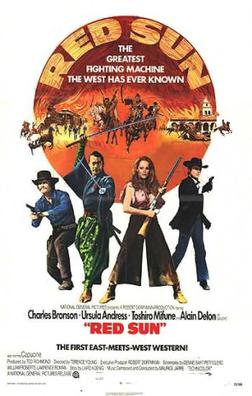
Red Sun is a 1971 Franco-Italian international co-production Spaghetti Western film directed by Terence Young and starring Charles Bronson, Toshirō Mifune, Alain Delon, Ursula Andress, and Capucine. It was filmed in Spain by the British director Young, with a screenplay by Denne Bart Petitclerc, William Roberts, and Lawrence Roman from a story by Laird Koenig. The film was released in the United States on 9 June 1972.
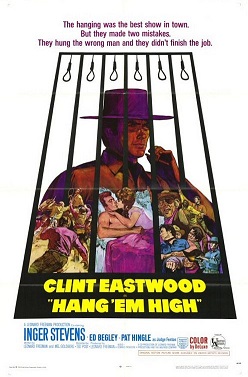
Hang 'Em High is a 1968 American revisionist Western film directed by Ted Post and written by Leonard Freeman and Mel Goldberg. It stars Clint Eastwood as Jed Cooper, an innocent man who survives a lynching; Inger Stevens as a widow who helps him; Ed Begley as the leader of the gang that lynched Cooper; and Pat Hingle as the federal judge who hires him as a Deputy U.S. Marshal.

Seven Men from Now is a 1956 American Western film directed by Budd Boetticher and starring Randolph Scott, Gail Russell and Lee Marvin. The film was written by Burt Kennedy and produced by John Wayne's Batjac Productions.
Burton Raphael Kennedy was an American screenwriter and director known mainly for directing Westerns. Budd Boetticher called him "the best Western writer ever."

Bandolero! is a 1968 American Western film directed by Andrew V. McLaglen and starring James Stewart, Dean Martin, Raquel Welch, George Kennedy, Andrew Prine, Will Geer and Clint Ritchie. The story centers on two brothers on the run from a posse, led by a local sheriff who wants to arrest the runaways and free a hostage that they took along the way. They head into the wrong territory, which is controlled by "Bandoleros".
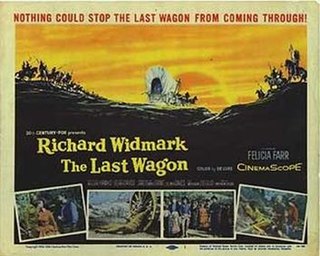
The Last Wagon is a 1956 American CinemaScope western film starring Richard Widmark. It was co-written and directed by Delmer Daves and tells a story set during the American Indian Wars: the survivors of an Indian massacre must rely on a man wanted for several murders to lead them out of danger.

Comanche was a mixed-breed horse who survived the ambush of George Armstrong Custer's detachment of the United States 7th Cavalry at the Battle of the Little Bighorn.
Anthony Nicholas George Duckworth-Chad, of Pynkney Hall, in Tattersett near King's Lynn, Norfolk, England, is a landowner, City of London business man, and a senior county officer for Norfolk.

Texas Cyclone is a 1932 American pre-Code Western film directed by D. Ross Lederman for Columbia Pictures. The film stars Tim McCoy as "Texas Grant", Shirley Grey, Wheeler Oakman and John Wayne, and features an early appearance by Walter Brennan as the sheriff.
Richard Ross Eyer is an American former child actor who worked during the 1950s and 1960s. He then became a teacher and taught at elementary schools in Bishop, California until he retired in 2006. He is the older brother of Robert Eyer (1948-2005), another child actor of the period.
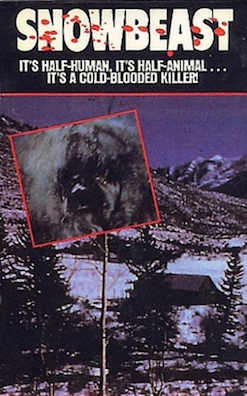
Snowbeast is a 1977 American made-for-television horror film starring Bo Svenson, Yvette Mimieux, Robert Logan and Clint Walker, and follows the story of a bloodthirsty Bigfoot-like monster terrorizing a ski resort in the Colorado Rockies. It was directed by Herb Wallerstein from a teleplay written by Joseph Stefano. The film originally premiered as the NBC Thursday Night Movie on NBC on April 28, 1977.
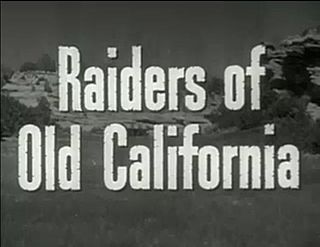
Raiders of Old California is a 1957 American black-and-white Western film produced and directed by Albert C. Gannaway and starring Jim Davis, Arleen Whelan, and Faron Young.

The Fargo Kid is a 1940 American Western film directed by Edward Killy starring Tim Holt. It was the second in Holt's series of Westerns for RKO. The film was shot in Kanab Canyon, Cave Lakes, and Johnson Canyon.
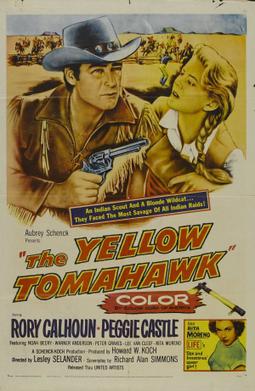
The Yellow Tomahawk is a 1954 American Western film directed by Lesley Selander and written by Richard Alan Simmons. The film stars Rory Calhoun, Peggie Castle, Noah Beery, Jr., Warner Anderson, Peter Graves, Lee Van Cleef and Rita Moreno. The film was released in May 1954, by United Artists.
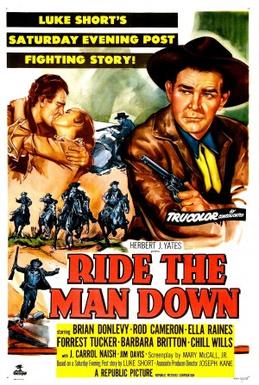
Ride the Man Down is a 1952 American Western film directed by Joseph Kane, written by Mary C. McCall, Jr., and starring Brian Donlevy, Rod Cameron, Ella Raines, Forrest Tucker, Barbara Britton, Chill Wills and J. Carrol Naish. The film was released on November 25, 1952, by Republic Pictures.

















